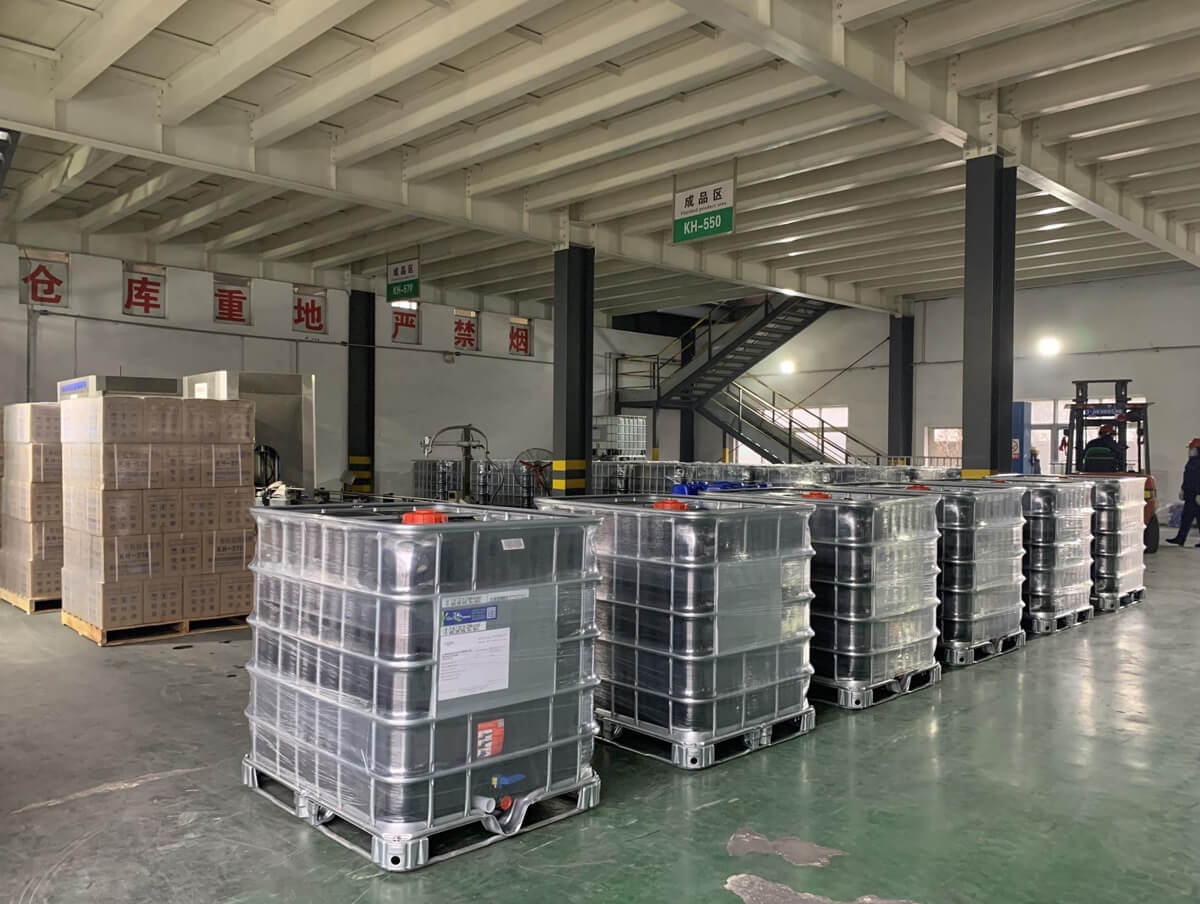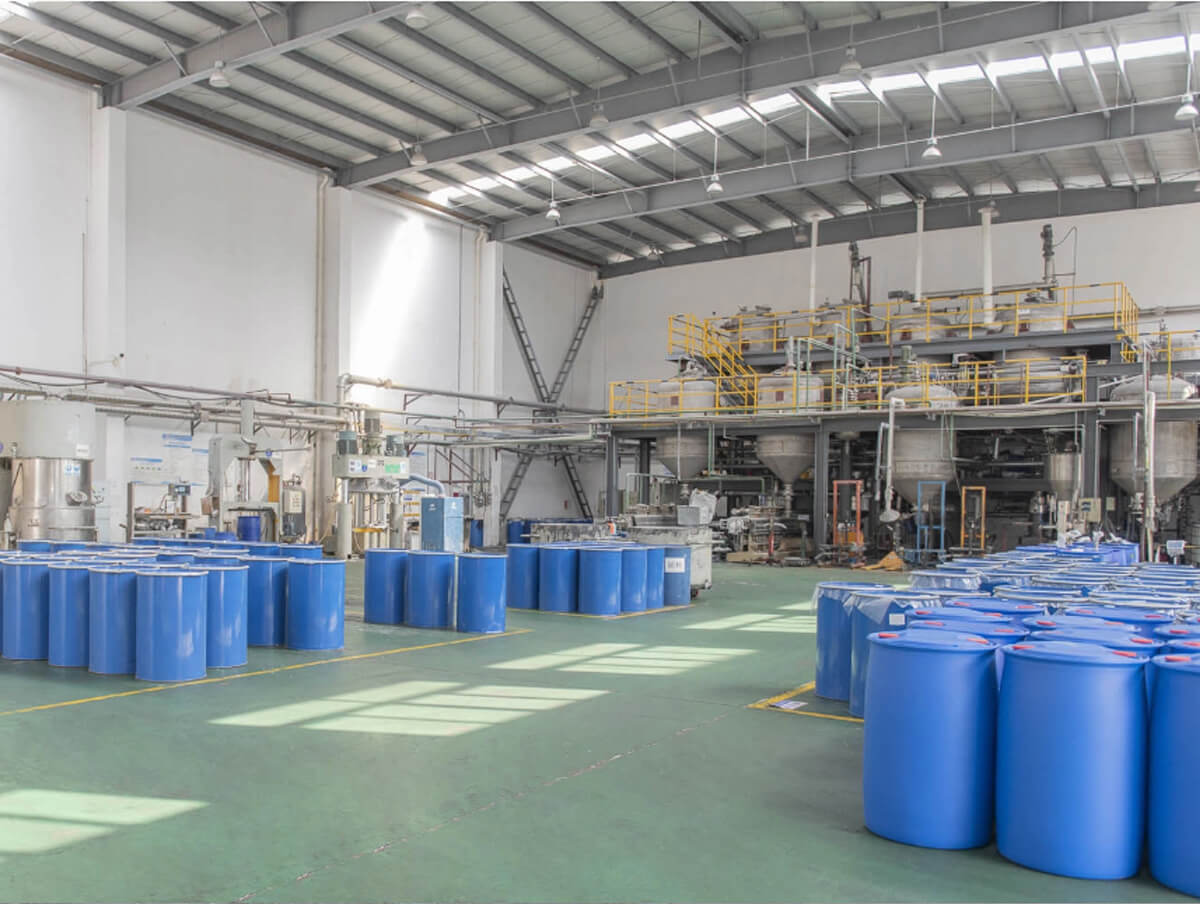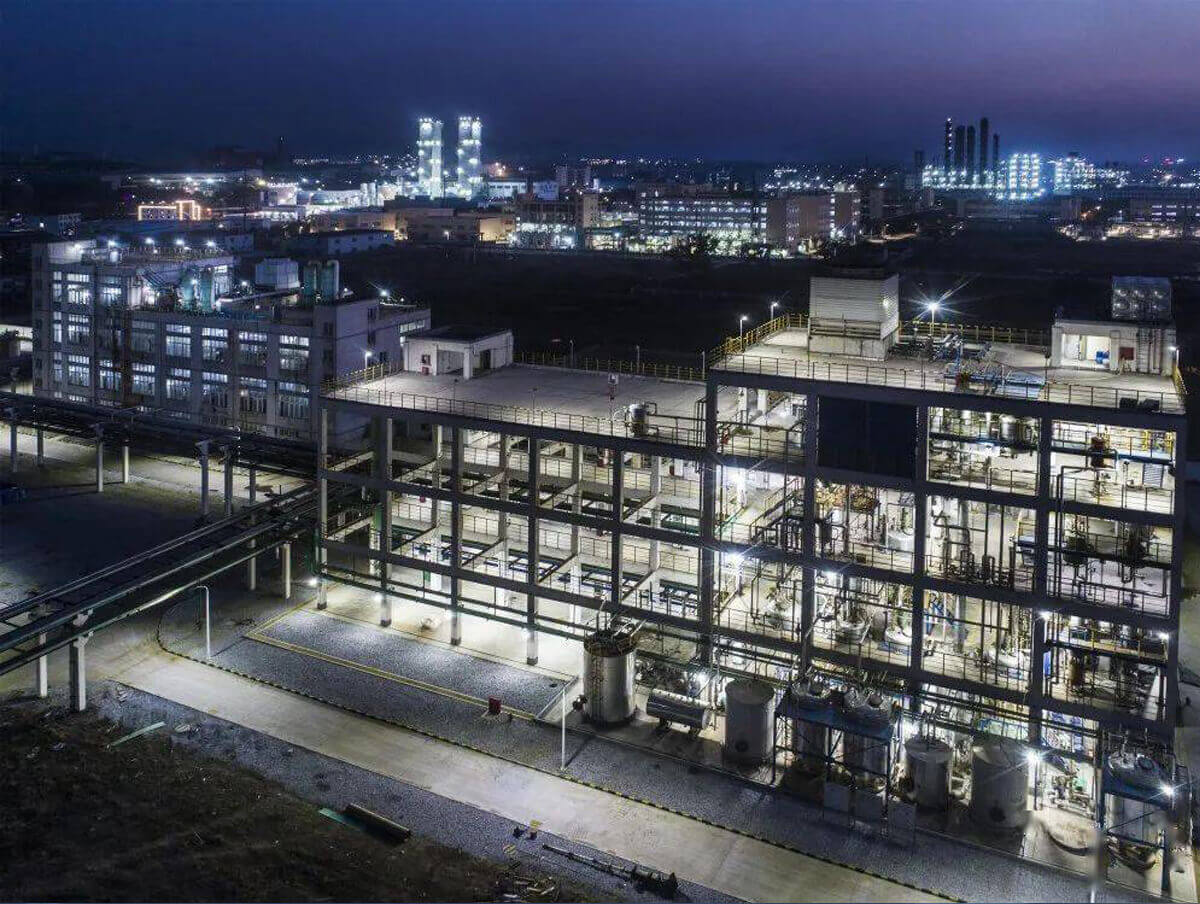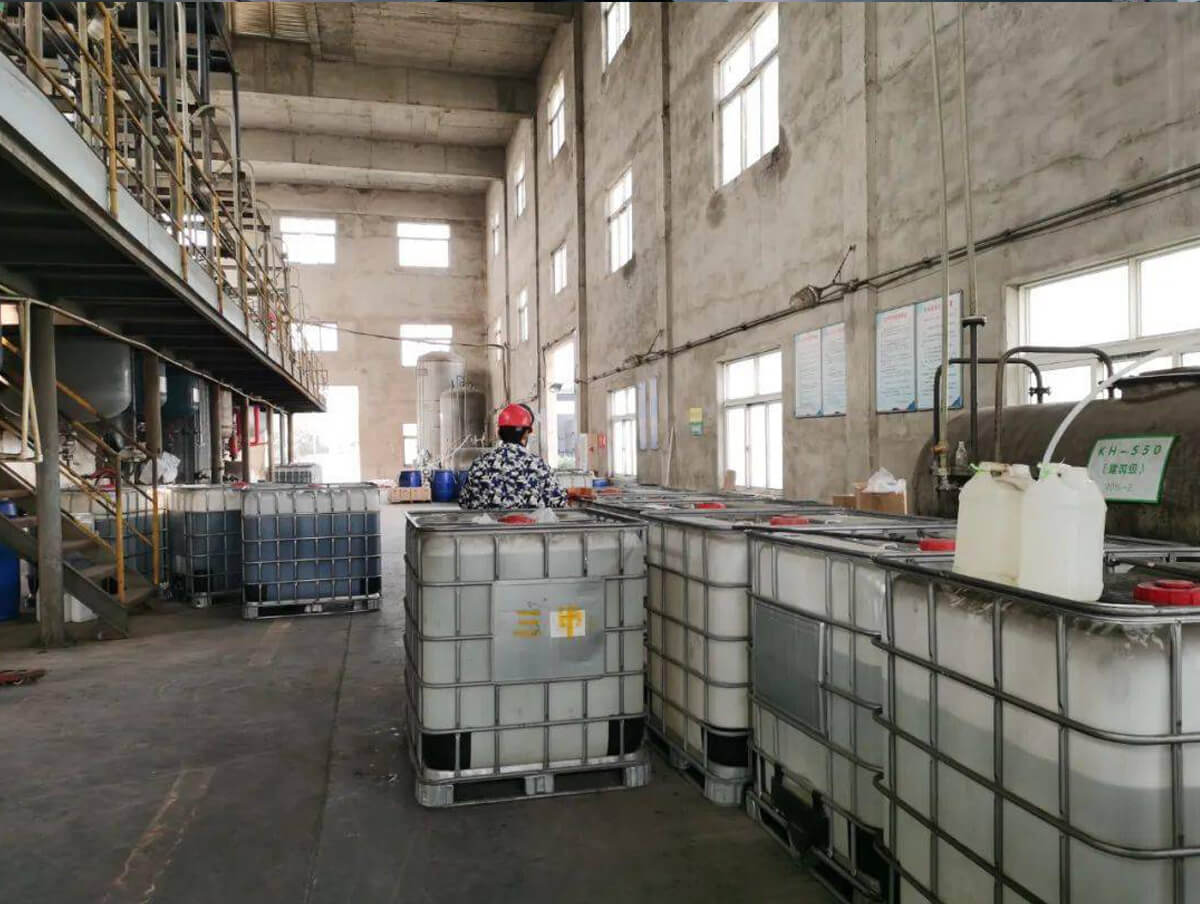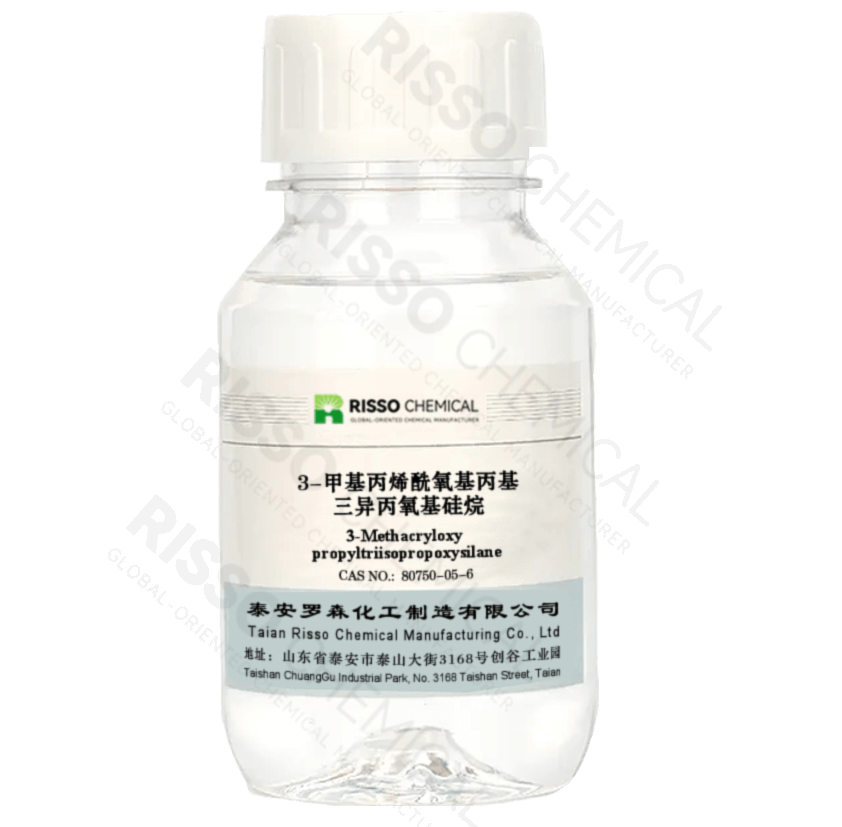
3-Methacryloxy propyltriisopropoxysilane
| Chemical Name: | 3-Methacryloxy propyltriisopropoxysilane |
| Alias: | 3-tri(propan-2-yloxy)silyl propyl 2-methylprop-2-enoate |
| Product Category: | CAS 8075-05-6 Acyloxy Silanes | Silanes |
| CAS NO.: | 80750-05-6 |
| Formula: | C16H32O5Si |
| EINECS: | 279-538-5 |
| Molecular Weight: | 332.51 |
| Purity: | 97% |
| Boiling Point: | N.A. |
| Density: | 0.9470 ± 0.0050 (ρ20)g/cm3 |
3-Methacryloxy propyltriisopropoxysilane Description
3-Methacryloxy propyltriisopropoxysilane CAS NO. 80750-05-6, it is a functional silane monomer with methacryloxy groups, which can be used as crosslinking agent for pure acrylic emulsions. This silane can be easily copolymerized into the main chain of acrylic emulsions, and in the application of coatings, it can increase the durability and adhesion of the coatings.
The unique structure of 80750-05-06 silane provides excellent stability in emulsions. Reaction and cross-linking do not occur until the coating coalesces. Waterborne coatings containing this silane remain stable and effective after one year of aging.
The unique structure of 80750-05-06 silane provides excellent stability in emulsions. Reaction and cross-linking do not occur until the coating coalesces. Waterborne coatings containing this silane remain stable and effective after one year of aging.
| Product Name | 3-Methacryloxy propyltriisopropoxysilane |
| Synonyms | 3-[Tris(1-methylethoxy) silyl]propyl methacrylate |
| Boiling point | N / A |
| Density | 0.9470 ± 0.0050 (ρ20)g/cm3 |
| Refractive index | 0.9470 ± 0.0050 (n25D) |
| Appearance | This product is colorless or light straw yellow transparent liquid |
| Package | 5kg/drum, 20kg/ctn. Sealed and stored in a cool, dry and ventilated place, moisture-proof and water-proof, away from fire and heat source. |
| Features |
|
| Application |
|
| Usage |
|
Packaging Specifications


Jessica G.
Get in touch to Get
- Quick and helpful reply within 8 hours;
- Tailored solutions provided for your project;
- One-stop purchasing service.
3-Methacryloxy propyltriisopropoxysilane: Guide
3-Methacryloxy propyltriisopropoxysilane, which have a molecular structure containing a methacryloyloxy functional group with an unsaturated double-bond structure and three hydrolyzable alkoxyl groups (isopropoxides), and this dual reactivity allows them to improve the mechanical properties of resin-based composites or improve properties such as adhesion strength and water resistance of resin coatings, through a bi-directional chemical reaction with both inorganic materials (glass, metal, fillers) and organic polymers (thermosetting resins, plastics, elastomers).
This dual reactivity allows them to improve the bonding, adhesion and compatibility between inorganic materials (glass, metal, filler) and organic polymers (thermosetting resins, plastics, elastomers) through a bi-directional chemical reaction with both materials, which in turn improves the mechanical properties of the resin matrix composites or improves the adhesive strength and water resistance of the resin coating.
This dual reactivity allows them to improve the bonding, adhesion and compatibility between inorganic materials (glass, metal, filler) and organic polymers (thermosetting resins, plastics, elastomers) through a bi-directional chemical reaction with both materials, which in turn improves the mechanical properties of the resin matrix composites or improves the adhesive strength and water resistance of the resin coating.



